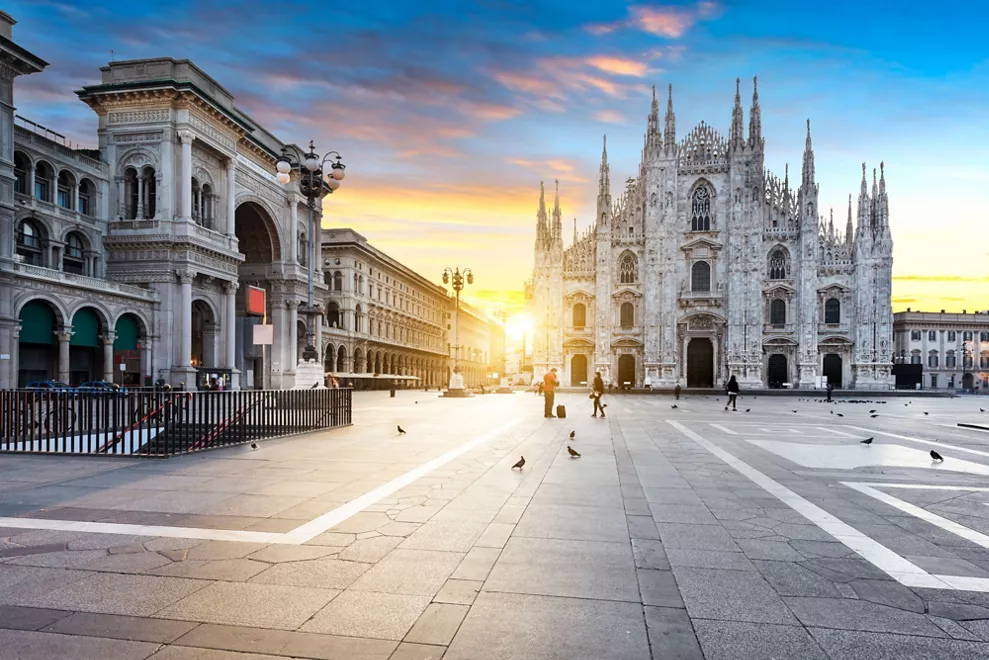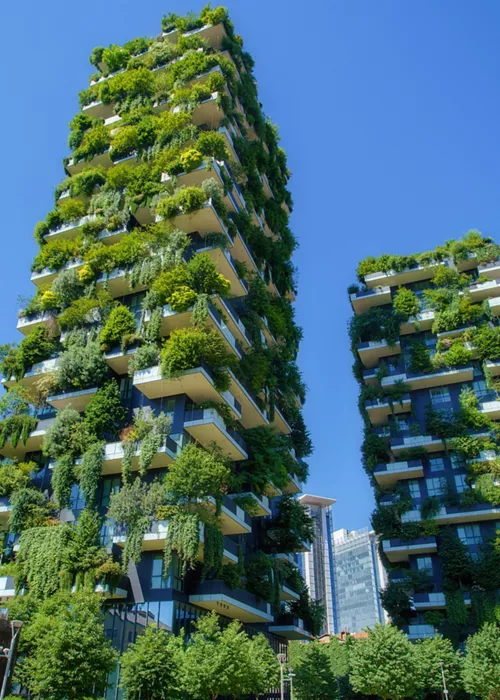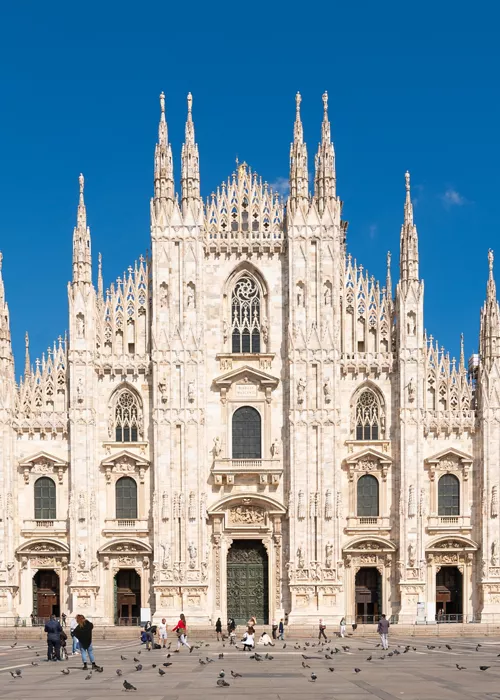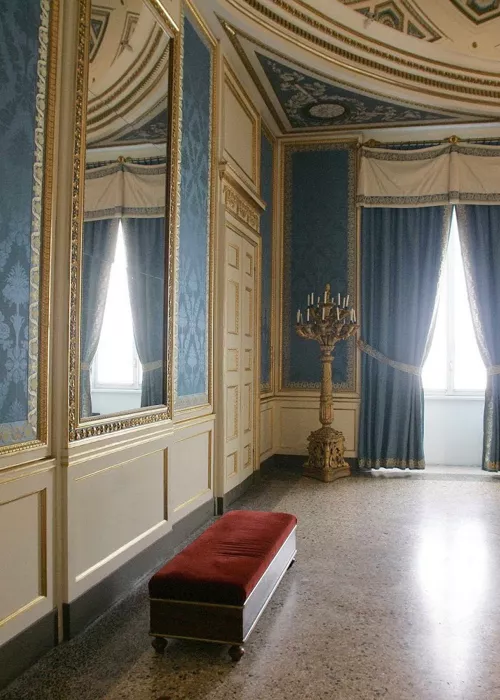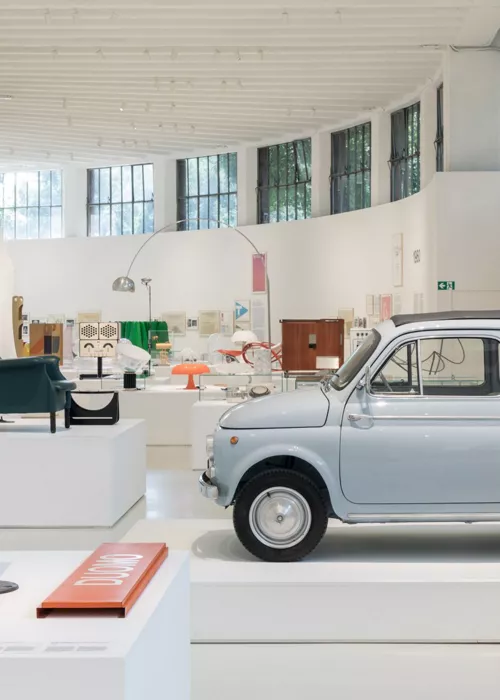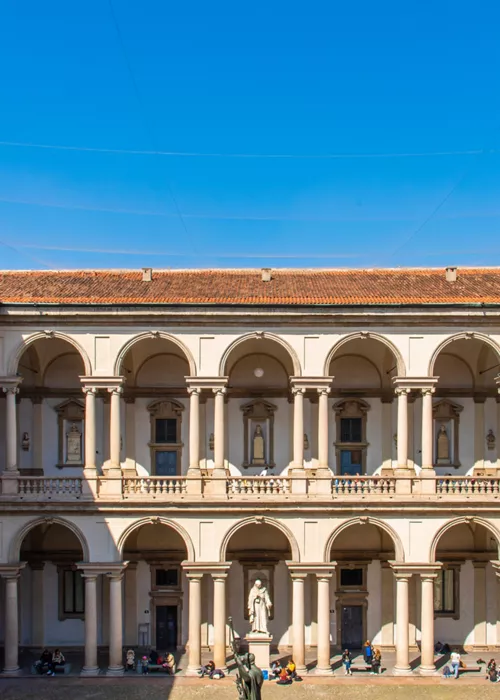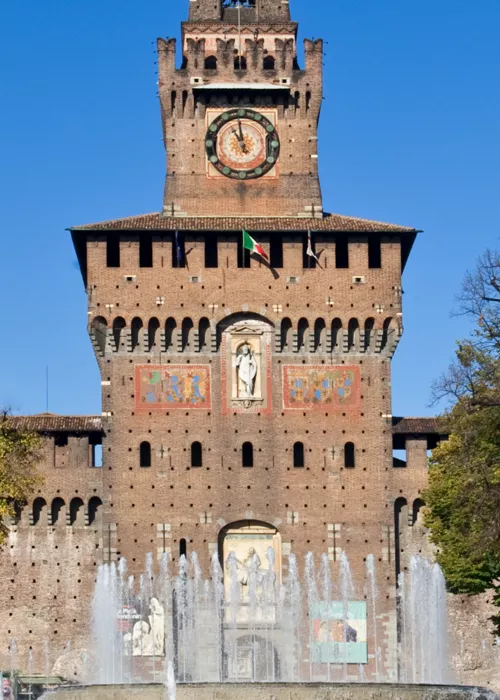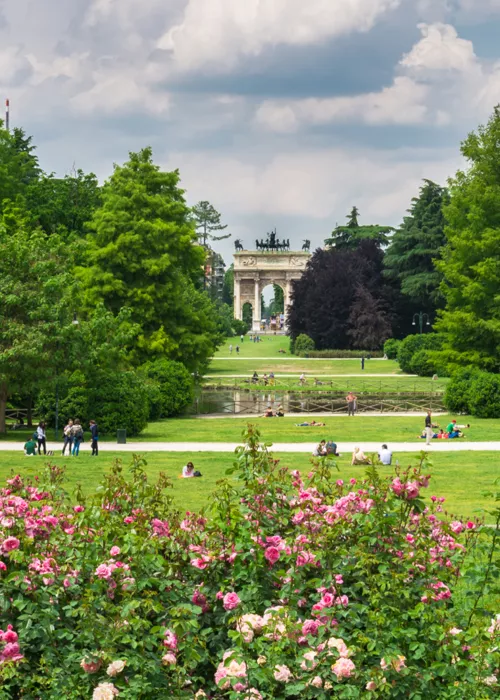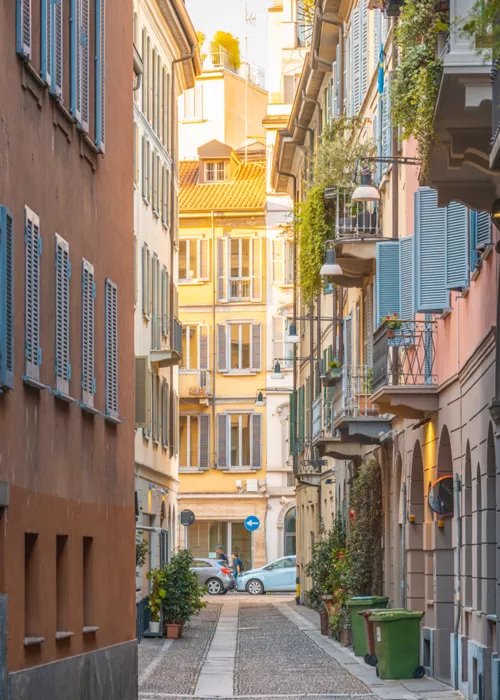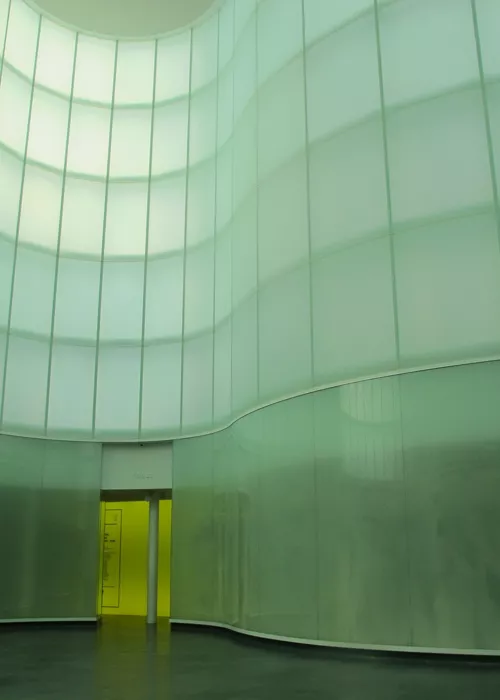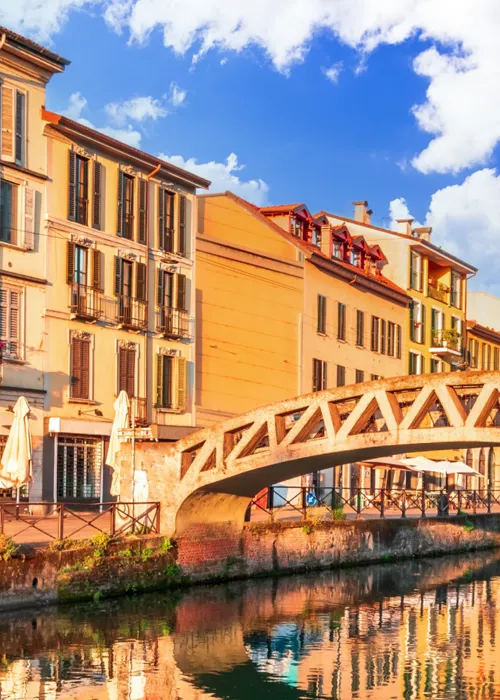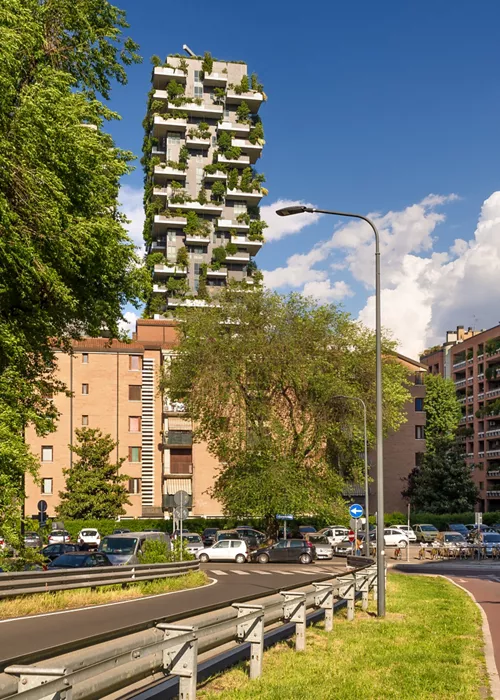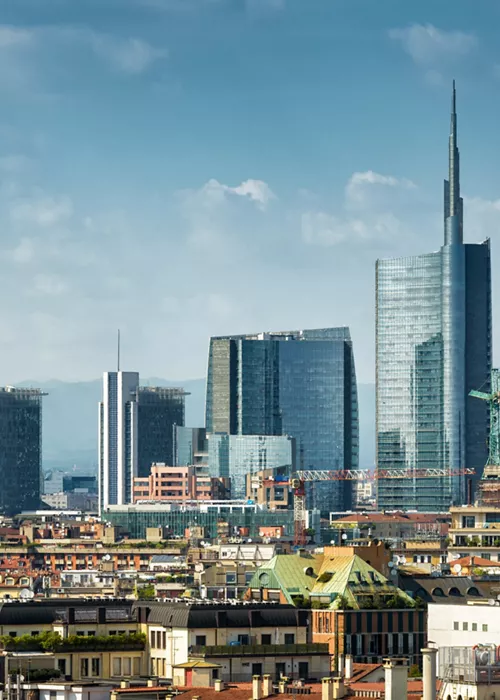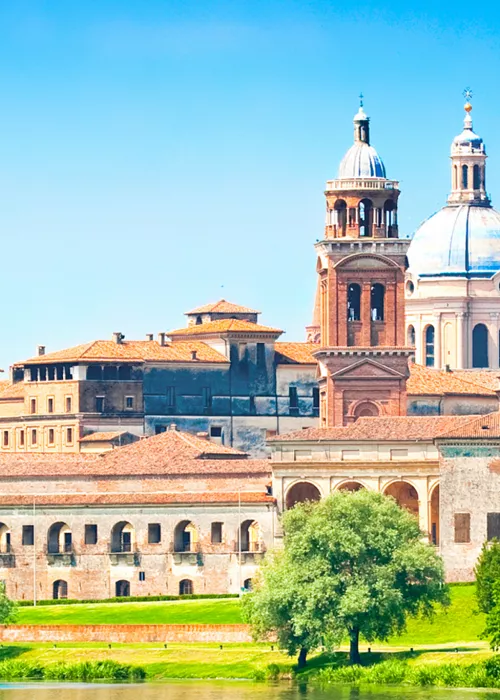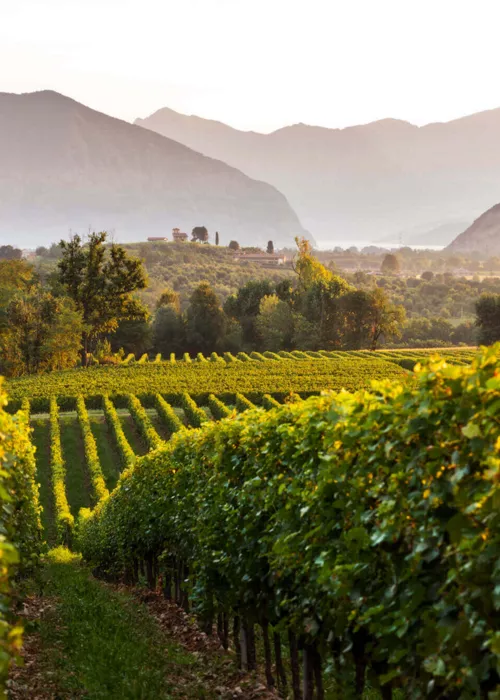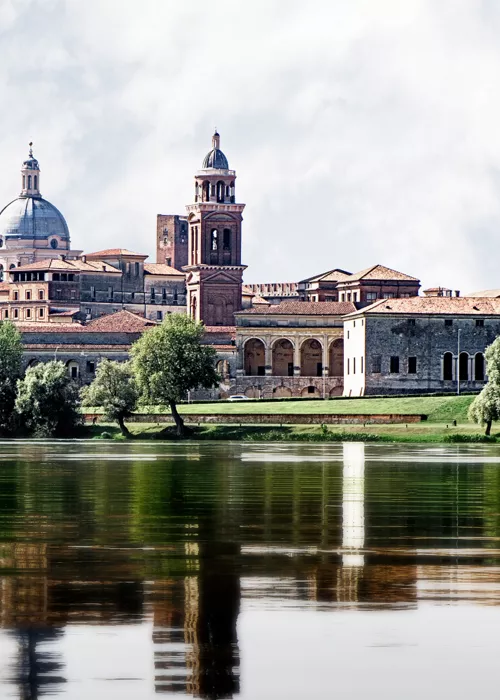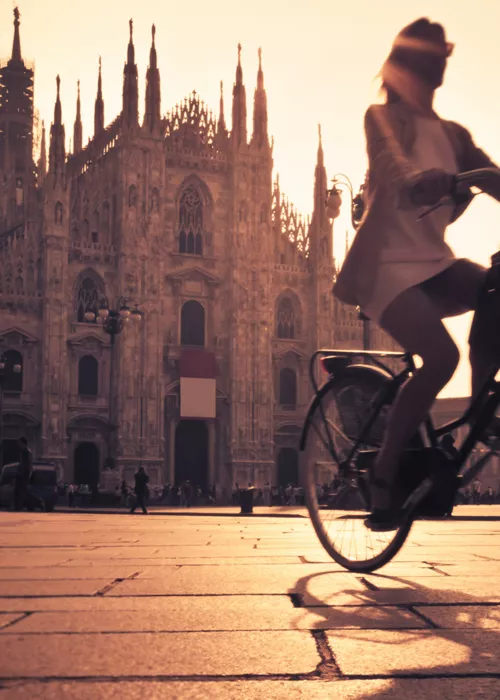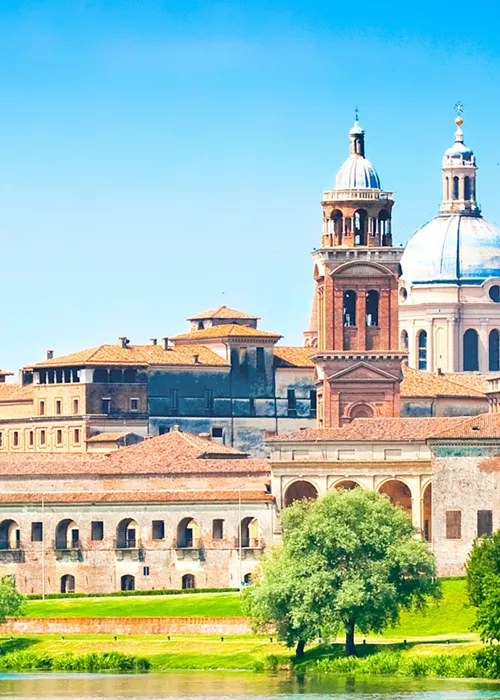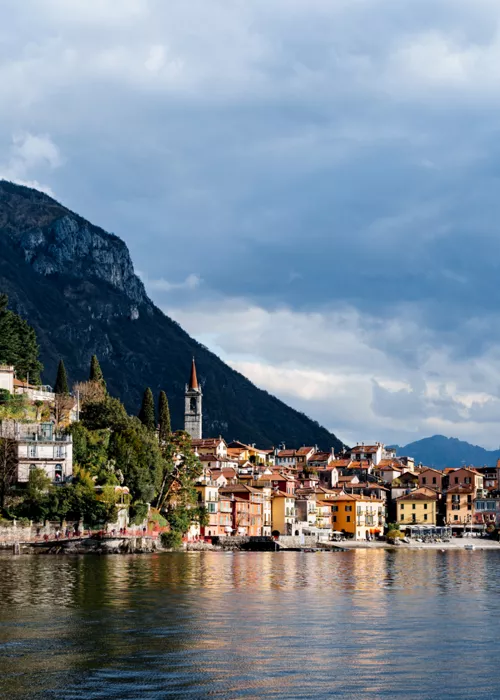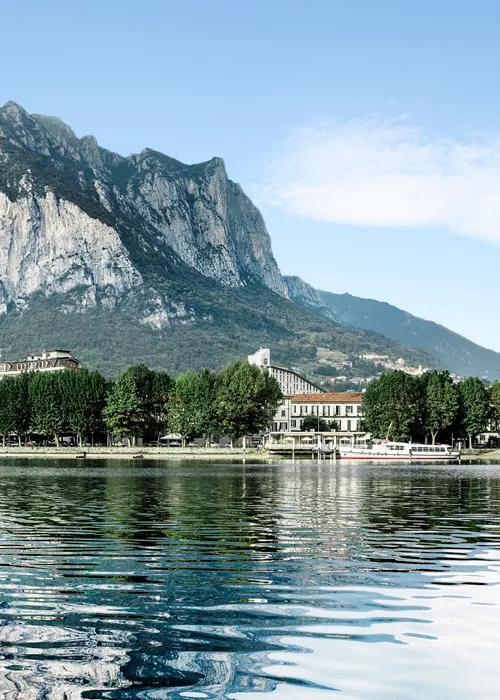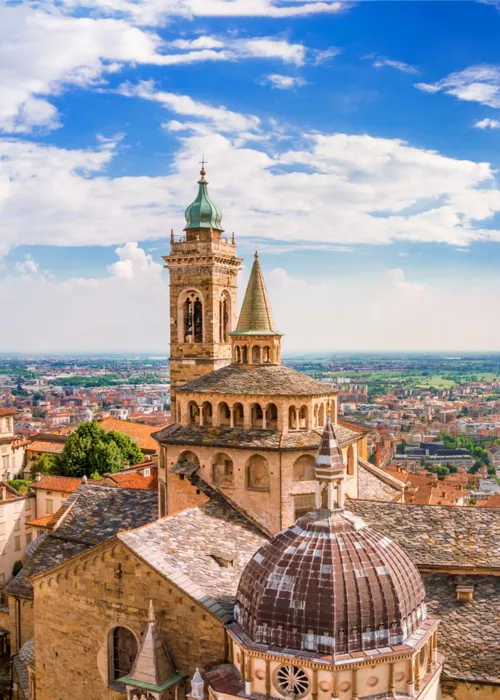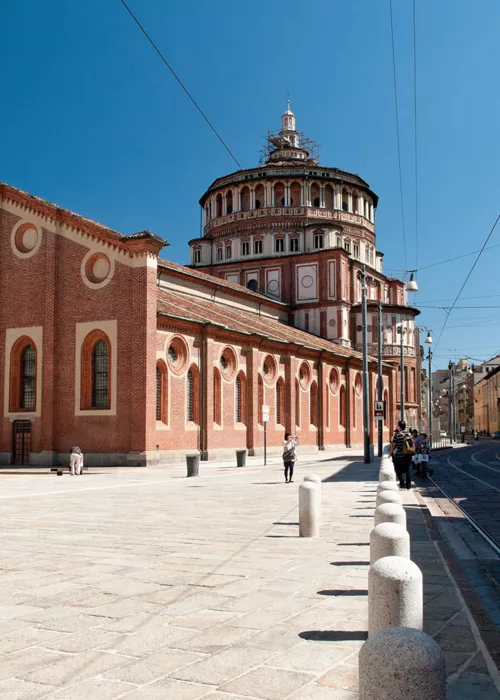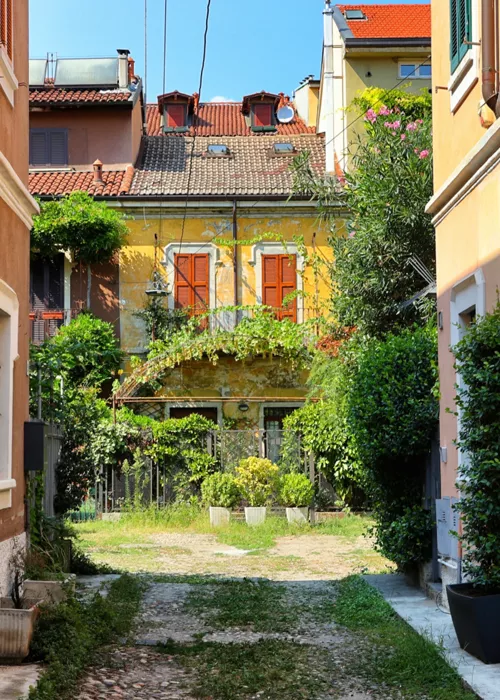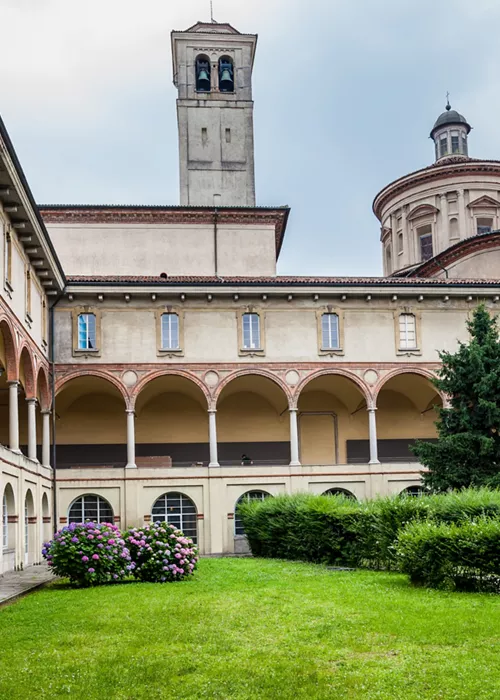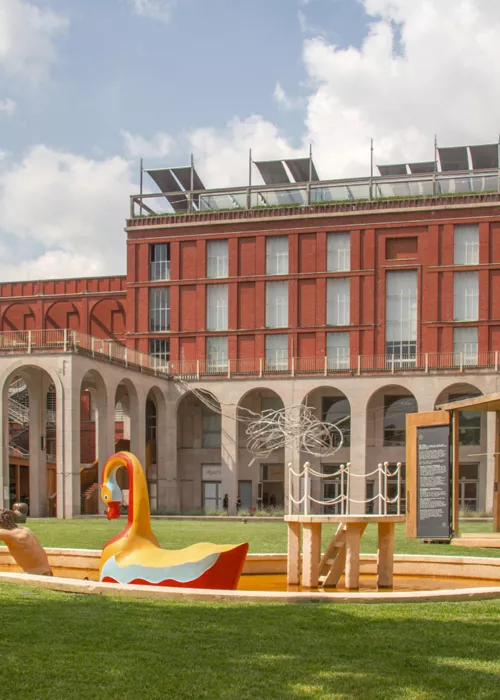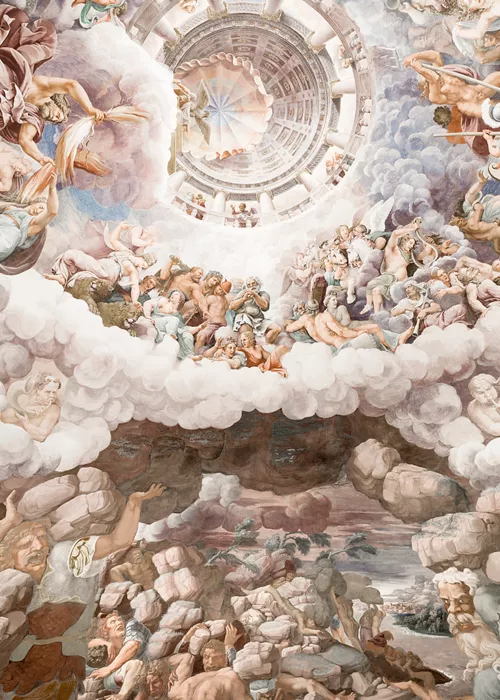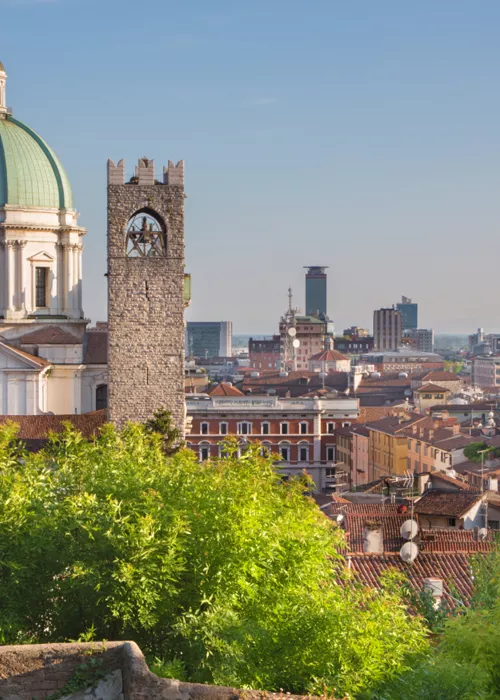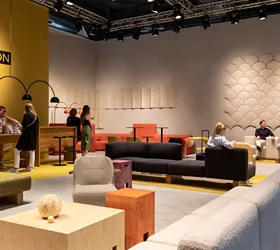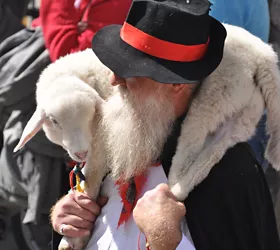Milan: much more than the world’s fashion capital
5 minutes
Your typical Milanese is work-focused, chaotic and a frequent attendee of aperitifs, but don’t be fooled into thinking that’s the whole picture. Lombardy's capital city boasts a rich artistic heritage, is home to the prestigious La Scala theatre and a striking skyline dotted with skyscrapers. But there is more.
Milan is a cosmopolitan metropolis with a European flair, and is considered one of the world's fashion and design capitals, a city of trendsetters and trailblazers. It is also a strategic financial centre at the international level, so much so that the Italian stock exchange is based here. Lombardy's capital has always been a shopping destination, concentrated in its Fashion Rectangle, the Quadrilatero della Moda.
Let’s not forget its luxury gastronomy, from traditional to fusion cuisine, nor the city's wide-ranging cultural offer, from exhibitions to live shows, best enjoyed after savouring a classic aperitif.
Particularities and history of Milan
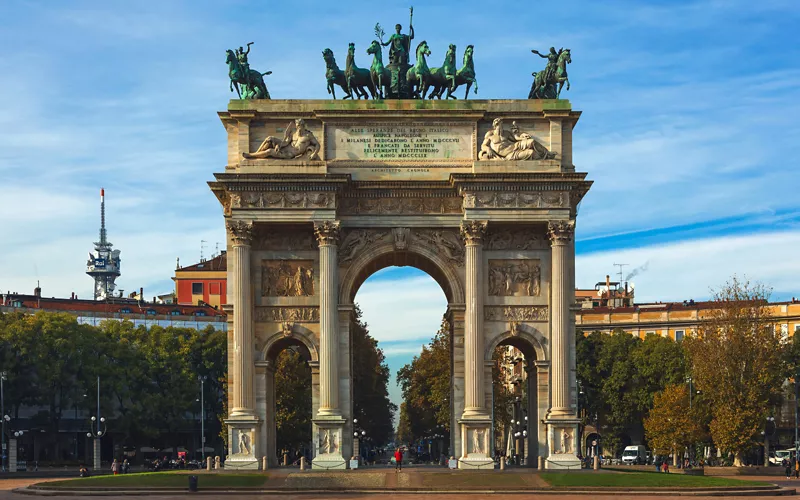
Founded around 590 BC by a Celtic tribe from the Insubri group in the centre of the Po Valley, this ancient settlement of Mediolanum has always played a central role in the Italian political and cultural world. While currently Italy's second most populous city, Milan was the capital of the Western Roman Empire from 286 AD to 402 AD. During the Holy Roman Empire, the importance of the city grew so much that it evolved into a free commune, leaving a mark on the history of Lombardy and the destiny of Italy as a whole.
Despite its tortuous and troubled history, Milan has grown to become an important hub, playing a fundamental strategic role. As a symbol of the Resistance, after World War II and particularly in the 1950s Milan became the power house of the Italian reconstruction effort, both industrially and culturally.
What to see in Milan on 11 stops
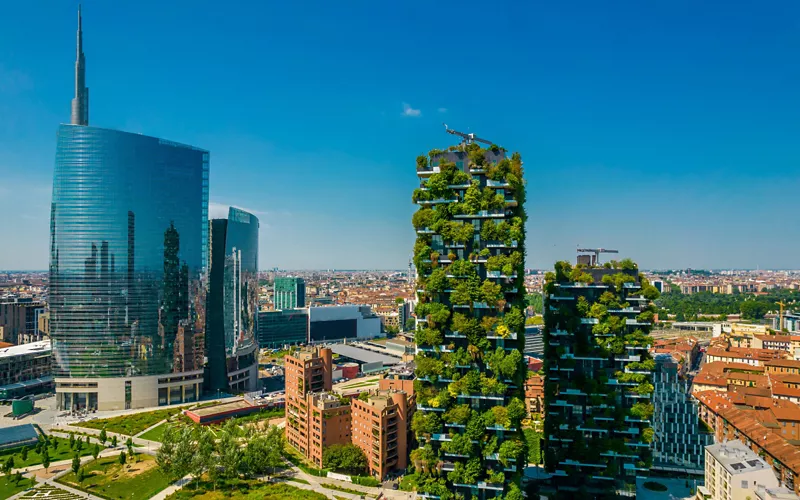
The first thing to do when you arrive is to visit Milan’s quintessential central monument: the Duomo, with its majestically soaring spires and the golden Madonnina statue at the top overlooking the city. It is a marvellous example of Gothic art and architecture and the largest church in Italy.
Leaving the Duomo aside, there are many other things to see in Lombardy's capital. Below is a list of them arranged by topic.
- Milan and modernity
Milan is home to true jewels of contemporary architecture, such as the futuristic CityLife district (designed by architects Arata Isozaki, Daniel Libeskind and Zaha Hadid) with its Three Towers or the Bosco Verticale, the Vertical Forest, two apartment blocks covered in greenery, the result of a metropolitan reforestation project designed by Boeri Studio. In front of the Italian stock exchange is Piazza Affari, home to the provocative sculpture Love by Maurizio Cattelan.
- Milan and art
The artistic offering of Milan is quite high, as proven by the varied exhibition schedule organised every month by the Palazzo Reale, as well as by the Triennale di Milano, which are an additional attraction for tourists. The same applies to the Pinacoteca di Brera, with its rich exhibition route ranging from prehistoric to contemporary art, and of course the Castello Sforzesco (one of the largest castles in Europe), which houses several museums and works such as Michelangelo's Pietà Rondanini.
- Milan by foot
After visiting the Castello Sforzesco, you can take a walk through the lush greenery of Parco Sempione to the majestic Arco della Pace, one of the most important neoclassical monuments in the city. For those who feel like stretching their legs even more, we suggest a stroll around the Brera district, where you can breathe in its bohemian air, and of course to the Navigli, where nightlife and romance coexist.
What to do in Milan: 8 tips for experiencing the city
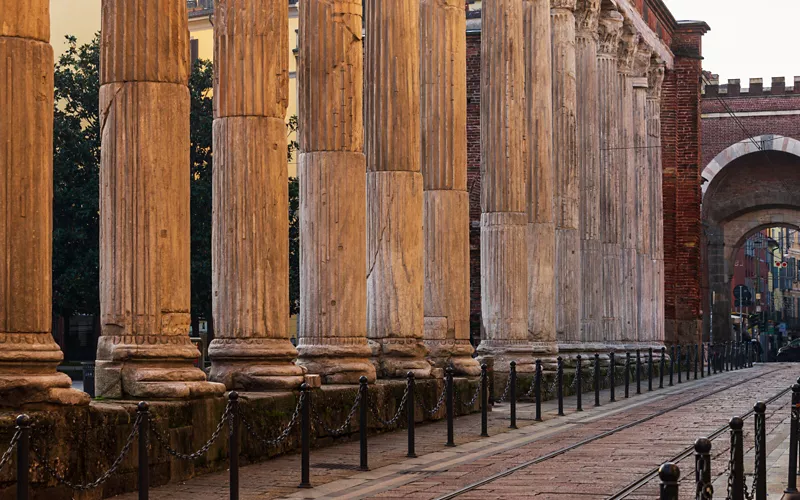
Milan is full of museums, from Mudec to the Museo del '900, and if you're looking for ideas on what to do in the city, you'll be spoilt for choice between exhibitions and permanent collections.
Alternatively, the city lends itself well to long walks. And not only along the Navigli canals, which you can also travel along by bike.
An aperitif on a terrace to admire the skyline, an afternoon at a spa or at the Colonne di San Lorenzo will connect you with the city's worldly soul.
If it's your first time in Milan and you want to go sightseeing, don’t miss out on a unique tram tour on a 1920s tramcar, which lasts 75 minutes and departs from Piazza Castello.
Treat yourself to a little shopping in the vintage shops of the Cinque Vie, where you can find a selection of original and fashionable clothing unlike anywhere else in the world.
What to eat in Milan? 5 unmissable dishes
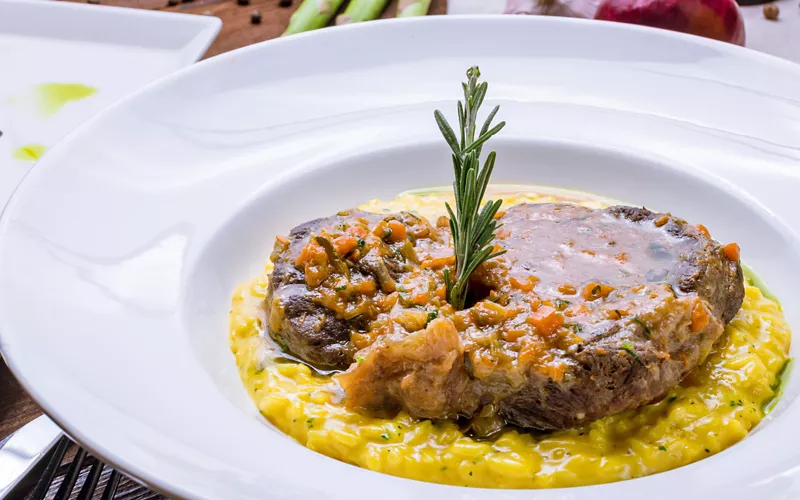
You name it, Milan can satisfy it. The city is teeming with restaurants and eateries and choosing what to eat will be difficult: from traditional to ethnic, vegetarian to tapas, gourmet venues to quaint trattorias with red and white tablecloths.
In order to do justice to Lombardy's culinary tradition, however, make sure you try out these essential dishes:
- You can't visit Milan without eating the famous risotto alla milanese, with its unique saffron-infused yellow colour, traditionally served with ossobuco, braised veal shank complete with bone and marrow.
- Milano and cotoletta alla milanese are a perfect match. On the bone and cooked in butter, this breaded veal cutlet can also be found ready and steaming in some historic butchers' shops. Go in and ask, it will be worth it. Meat lovers must try the mondeghili, tasty meatballs made with beef, and the cassoeula, a stew made with pork and vegetables.
8 unusual places in Milan to discover
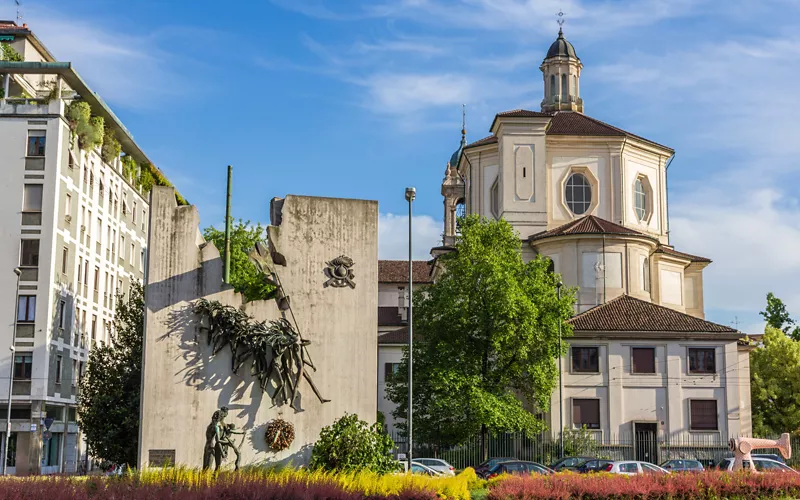
Milan is not only made up of iconic locations, but also of quirky sights. The first in the list is San Bernardino alle Ossa (in Piazza Santo Stefano), a church that takes its name from the decoration of the walls of the ossuary (which is covered in bones). For something a little less gloomy, head over to the Villa Invernizzi gardens (Palestro area), home to a colony of pink flamingos.
Other areas of the city to discover are Viale Majno where there is a building completely covered in greenery that changes with the seasons, the Isola district e Via Tortona. The Guastalla Garden, with its statues near the State University, is a delightful area, not to mention the striking Colonna del Diavolo, the Devil's Column in Piazza Sant'Ambrogio.

